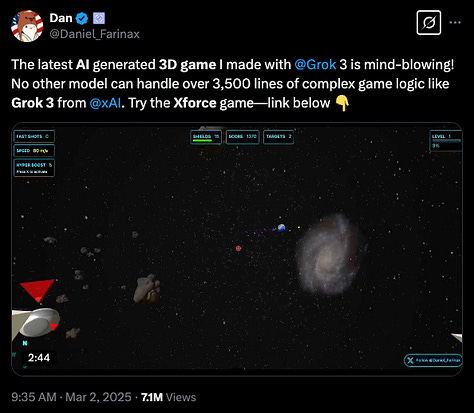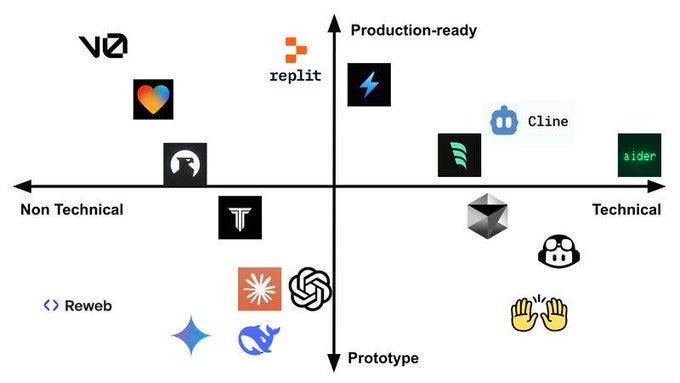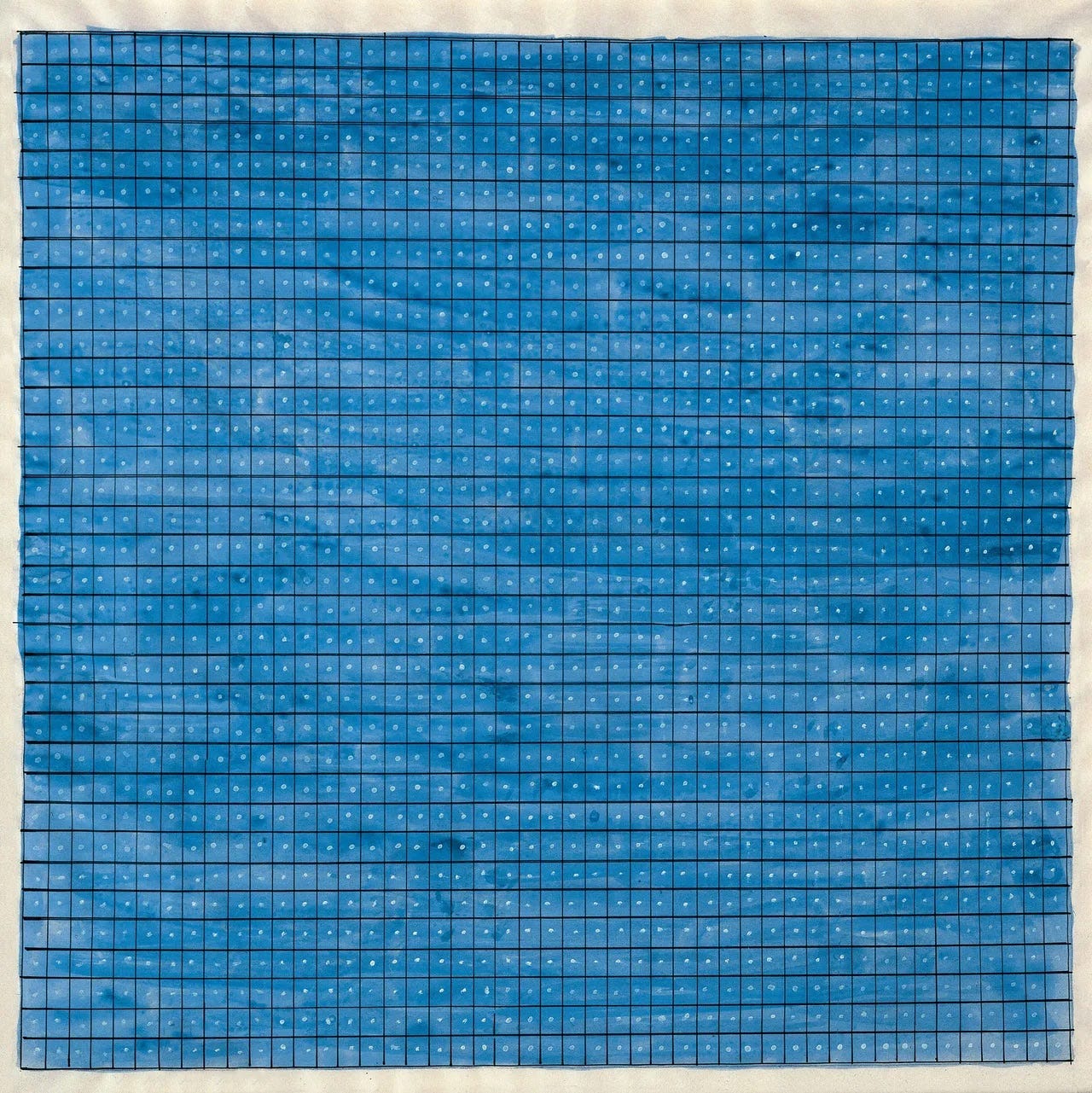The New AI-Powered Product Development Paradigm
How AI is collapsing the gap between ideas and working products






If you’ve been building software products for any amount of time, you’ve likely noticed something: the gap between “that’s a great idea” and "that's a shipped feature” has traditionally been measured in weeks or months.
This is not because your team is slow. It’s because turning ideas into working software has historically been a complex, multi-stage process with many handoffs and dependencies.
But as someone who has observed this process countless times throughout my career, I can tell you with confidence: that gap is collapsing, and AI is the catalyst making it happen.
The Current Product Development Landscape
Traditional product development resembles a relay race. The PM writes requirements (in the form of a PRD), hands them to a designer who creates mockups, which eventually reach engineers who implement them. Each handoff introduces friction, misinterpretation, and delay.
In most organizations, these roles have been clearly demarcated:
Product Managers: Focus on market needs, business goals, and feature prioritization
Designers: Own the user experience design, visual design, and information architecture
Developers: Handle implementation, technical architecture, and feasibility
But AI is rapidly dissolving these boundaries. The tools that have been emerging lately go beyond automating the boring stuff, they fundamentally change who can do what, and how quickly.
PRDs Have Lost Their Effectiveness
If you’ve spent time in software product development, you’re familiar with the PRD (Product Requirements Document)–a comprehensive document that PMs labor over to communicate what should be built.
The traditional PRD is often:
Lengthy: Attempting to cover every possible scenario
Abstract: Words describing interactions that would be better shown via a prototype or mockup
Prescriptive: Focusing on implementation details rather than use outcomes
Static: Lacking the adaptability necessary when learning occurs during implementation
This documentation-heavy approach creates numerous problems. Engineers interpret requirements differently than intended. Designers disagree with interaction patterns. By the time feedback cycles complete, market conditions may have changed.
Most critically, traditional PRDs delay the most valuable activity in product development: getting something working in front of users and seeing how it works in the real world.
AI as the Catalyst for Change
Enter AI–not as a magic solution, but as very smart tools that help to fill knowledge gaps. When used effectively, AI tools can help everyone involved in the product cycle bring more value to the table, shortening the development process.
What once took weeks of design work, review, and engineering time can now be accomplished in a matter of days.
Some of the AI tools reshaping product development include:
Chatbots (e.g. Claude, ChatGPT, Grok): These serve as brainstorming partners and code generators. They can also be used to create user profiles and personas, sitemaps and design docs, or basic system designs.
Cloud development environments (Replit, Bolt, v0, Lovable): Full-stack platforms that build and run apps with AI assistance.
Local developer assistants (Copilot, Cursor, Windsurf): IDEs that help write code with AI
Design/wireframe builders (Magic Patterns, Relume, Galileo): Platforms that translate text prompts into UI prototypes along with functional code
Generative Graphic design (Midjourney, Runway): Generative AI tools that can help create visual branding elements or graphic mockups.
The most remarkable aspect of these tools is not just their individual capabilities, but how they’re enabling people to transcend their traditional roles.
Designers can now create functional interfaces without deep coding knowledge. PMs can create wireframes and prototype interactions without knowing how to use Figma.
Prototype-Driven Development: The New Paradigm
This emerging paradigm makes the traditional approach look slow and inflexible. Instead of waiting for exhaustively documented requirements and then having team members work only within clearly defined niches, teams are:
Brainstorming ideas with AI assistants
Building tiny, lightweight prototypes with AI coding tools
Creating wireframes and UI flows from the outset
Mapping out “crawl, walk, run” product paths
Iterating rapidly based on real-world concrete feedback
Consider a typical scenario: A PM has an idea for a new feature. Rather than writing a detailed PRD, they:
Discuss the concept with Claude, refining the idea through conversation
Ask Claude to generate the basic structure for a lightweight prototype
Implement this prototype in Replit or a similar environment
Share the working demo with design and engineering for immediate feedback
This approach collapses what used to be weeks of work into a matter of days. The fundamental shift is from what I call “describing to “showing” – communicating with a tangible product rather than just words in a document.
Benefits of AI-Powered Prototyping
This shift brings numerous advantages:
Shorter, more effective design sprints. What used to be week-long exercises can now be compressed into a single day, with more tangible outputs.
Reduced knowledge gaps. Tools like Magic Patterns allow PMs without Figma expertise to create decent UI mockups. Similarly, designers without coding experience can generate functional interfaces.
Empowered designers. Designers can now build with real code, giving them more specificity over the final implementation and reducing the “lost in translation” problem when designs move to development.
Better technical feasibility assessment. Working prototypes reveal technical challenges early, rather than discovering them during implementation.
Enhanced collaboration. When teams work with concrete prototypes rather than abstract written specifications, communication becomes clearer and more effective.
The New PM-Designer Collaboration Model
I think we’re going to see a big transformation in how PMs and designers work together:
Joint ideation: AI tools enable PMs and designers to brainstorm and prototype simultaneously
Rapid validation: Ideas can be tested quickly with minimal development resource investment
Shared language: Working prototypes provide a concrete reference point that reduces misunderstandings
Skill augmentation: AI helps both PMs and designers extend beyond their traditional capabilities–alleviating bottlenecks
From talking to many of the new cohort of AI-native companies, the lines between these roles are blurring. The focus shifts from “who does what” to “how quickly can we validate this idea with users.” In many cases, the same process that used to take weeks can now be completed in less time by fewer people with broader skill sets.
The Future Is Already Here
What I find most fascinating about this paradigm shift is that it’s not theoretical–it’s happening right now in forward-thinking AI-native teams. Products that would’ve taken quarters to develop are being prototyped in a matter of days.
The competitive advantage this creates cannot be overstated. Companies that adopt this approach can:
Test more ideas with less investment
Respond to market changes more quickly
Reduce the risk of building the wrong thing
Improve alignment between business, design, and technology
The future of product development is prototype-driven, and AI is the force multiplier making it possible. The companies that adapt to this reality fastest will have a significant advantage in the marketplace.
Like all technological shifts, and we’re seeing this with AI, this one won’t be evenly distributed. Some teams will cling to familiar processes, but for those willing to embrace a new way of working, the rewards will be substantial.
The gap between idea and implementation is collapsing. The question is not whether your organization will adapt, but how quickly.





